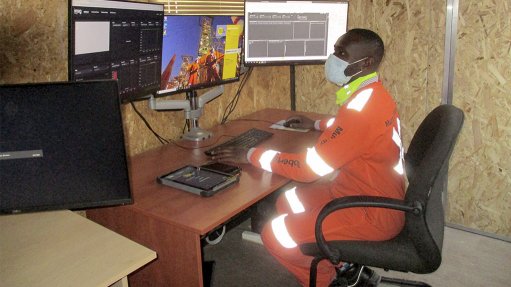
Murray & Roberts Cementation applies Wi-Fi technology to underground mines and introduced a range of digitisation initiatives
As the mineral sector seeks safer and more automated operations in line with the ‘smart mining’ vision, digital technology is being increasingly used to streamline operations and drive down unit costs.
“Progress in applying Wi-Fi technology to underground mines is allowing us to introduce a range of digitisation initiatives in our projects,” says Murray & Roberts Cementation MD Mike Wells. “This includes a condition monitoring system (CMS) to track the operating data of trackless mining machines (TMMs) in order to monitor their health.”
With modern TMMs being fitted with a higher degree of electronic control units (ECUs), all interconnected and feeding data back to the machines’ control units, underground Wi-Fi now allows real-time data captured by the CMS data loggers to be sent to control rooms for instant analysis and action by specialist software applications
“We are also applying production control systems (PCSs) – making use of heavy-duty ‘plods’ or tablets – in the cabin of machines,” he says. “Rather than using manual paper systems, operators can have digital pre-start checklists and can log the starting and stopping of various activities underground.”
These technologies provide valuable information to supervisors and managers in their allocation of people, machines and other services where they are required. In particular, the real-time transmission of the data allows decisions to be taken quicker, leading to better results and greater efficiency in the application of resources.
Fixed installation monitoring is another important element of the benefits to be leveraged from a digital communication network, he says. This relates mainly to static equipment like dirty water pumps and ventilation fans, which are central features of most mining operations.
“By linking these systems to the mine’s digital backbone, we are able to monitor their operation and importantly, also start and stop them, from a central control room,” says Wells.
The company notes that a key resource behind this strategic direction is intelligent solutions specialist Insig Technologies – recently acquired by group company Murray & Roberts – which is developing agnostic interfaces between the systems of various original-equipment manufacturers.
“We are aiming for agnostic systems and data loggers that will ‘talk to’ machines from various TMM suppliers,” he explains. “For instance, we want to be able to activate a ventilation-on-demand functionality from a remote location. This would allow an operator to divert ventilation capacity to a heading where a blast has just taken place, facilitating more rapid extraction of fumes and facilitating quicker re-entry.”
Murray & Roberts Cementation highlights that it has already implemented many of these innovative strategies at B2B’s Otjikoto gold mine in Namibia, and will also roll them out with a battery-powered mining fleet at Ivanhoe Mines’ Platreef project in Limpopo province, South Africa.